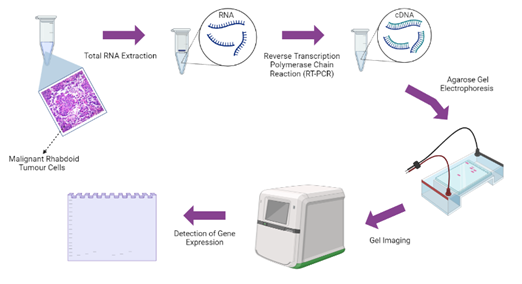Paper Authors and Title
Jing Ling Wong (Dundalk Institute of Technology), Jade Pollock, “Investigating the Expression of c-MYC and BIRC5 (Survivin) in Malignant Rhabdoid Tumours”
Abstract
Cancer is a disease characterised by the ability of cells to acquire ‘hallmarks’ such as resistance to cell death and metastasis. Malignant rhabdoid tumours (MRTs) are pediatric neoplasms with no standardised treatment and poor prognosis. This project will investigate the gene expression of both c-MYC and BIRC5 (survivin), which have been shown to evade cell death by inhibiting apoptosis in the malignancy, such as chronic myelogenous leukemia (CML). Downregulation of the expression of c-MYC and BIRC5 may sensitise MRT cells to apoptosis.
Total RNA was extracted from BT-16 and BT-12 MRT cell lines three times respectively. Reverse-transcription polymerase chain reaction (RT-PCR) was used to synthesise complementary DNA (cDNA) and amplified with c-MYC, BIRC5, and housekeeping gene Glyceraldehyde-3-phosphate dehydrogenase (GAPDH) primers respectively. RT-PCR products were visualised on agarose gels to investigate the expression of c-MYC, BIRC5, and GAPDH in both cell lines.
In both BT-16 and BT-12 cell lines, c-MYC and BIRC5 were detected by agarose gel electrophoresis at the expected product sizes of 167 bp and 186 bp respectively. GAPDH was consistently shown at the product size of 214 bp. The results presented show promise for c-MYC and BIRC5 as novel therapeutic targets for MRT patients, as this has not previously been shown in BT-16 and BT-12 cell lines.
To further examine the gene expression, real-time PCR (qPCR) should be performed to determine relative gene expression of c-MYC and BIRC5 in MRT cells, and a comparison of gene expression in MRT cells to normal, healthy brain cell lines is recommended.

